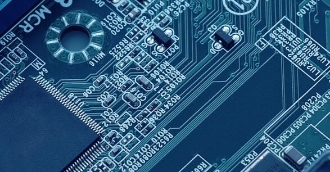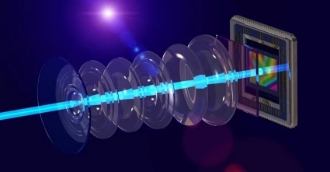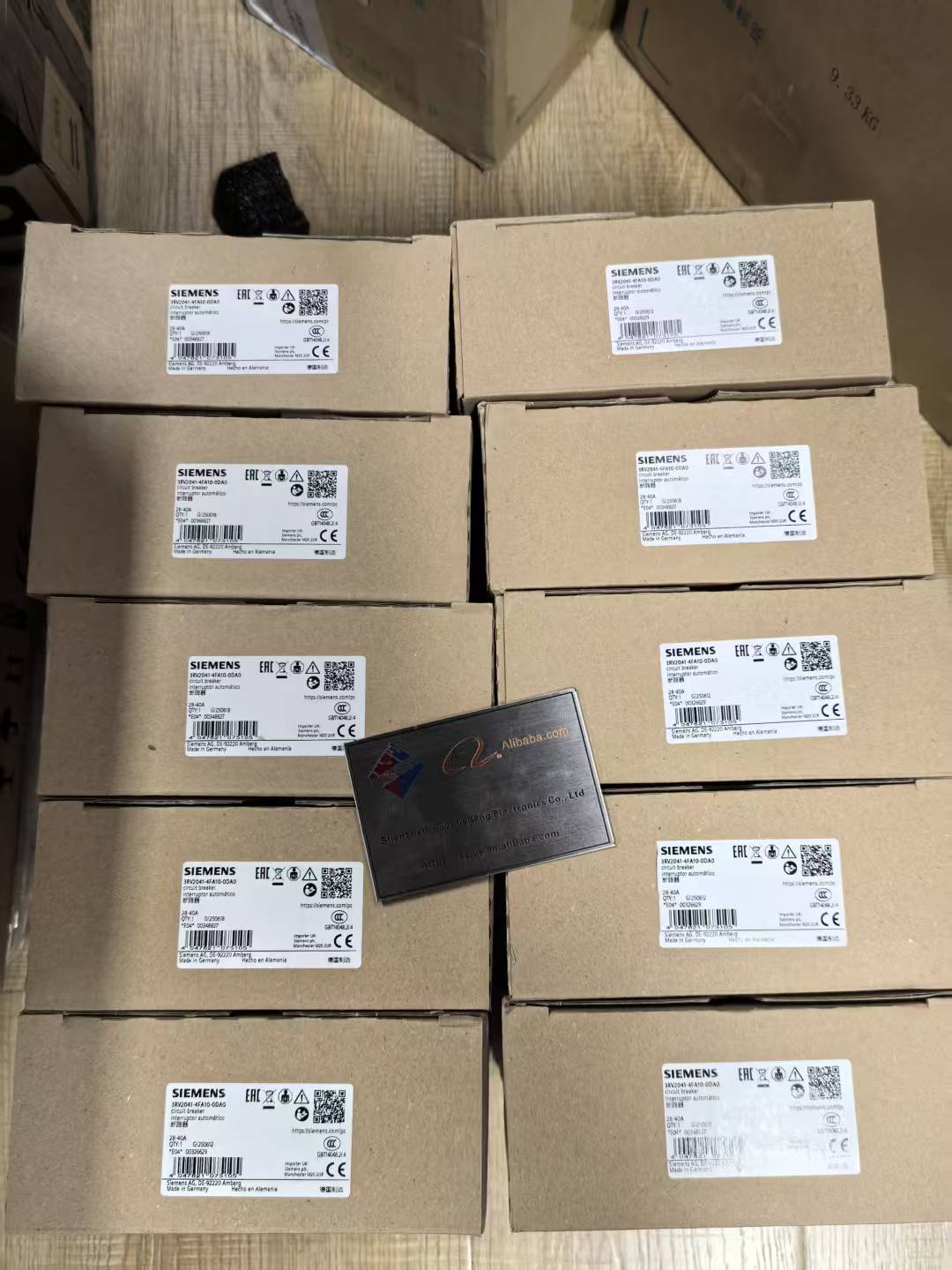The Next Frontier in High-Speed Electronics
1/15/2025 5:55:23 PM
As data traffic surges toward 2 Zettabytes annually by 2025, traditional electronic interconnects face insurmountable limits in speed and energy efficiency. Enter photonic integrated circuits (PICs)-miniaturized systems that encode information in light waves, enabling terabit-per-second data transfer with picosecond precision. By merging silicon photonics with advanced lithography, PICs are revolutionizing high-speed computing, sensing, and communication, offering a path beyond the bottlenecks of copper-based electronics. This article explores their core technologies, transformative applications, and the challenges shaping their commercialization.
The Rise of Photonic Integration
Moore's Law-driven transistor scaling has failed to keep pace with bandwidth demands: copper interconnects in 7nm chips lose 30% of signal strength over 10mm, while power consumption for data movement exceeds 50% in AI accelerators. Photonic circuits address this by leveraging light's speed (1/3 c in silicon) and parallel processing capabilities:
100x Faster Signaling: Optical interconnects operate at 50 Gbps per channel, surpassing electrical limits (10 Gbps).
10x Lower Energy: Light-based switches consume <1 pJ/bit, compared to 10 pJ/bit for electrical CMOS.
Key materials like silicon (for photonics), silicon nitride (waveguides), and III-V semiconductors (lasers) form the foundation, with fabrication compatible with existing CMOS processes.
Core Technological Breakthroughs

1. Silicon Photonics: Monolithic Integration with Electronics
IMEC's 22nm platform integrates 1,000+ photonic components (waveguides, modulators) with CMOS logic on a single 300mm wafer:
Hybrid Laser Integration: Intel's 10nm PICs embed III-V lasers on silicon via wafer bonding, achieving 1.6 THz bandwidth for data center interconnects.
Micro-Ring Resonators: Lightmatter's Envo chip uses 5μm-diameter resonators for wavelength division multiplexing, packing 128 optical channels in a 2mm² die.
2. Photonic Neuromorphic Engines
Lightmatter's Envo processor demonstrates:
10 TOPS/W AI Inference: 10x better efficiency than NVIDIA H100 by using photonic matrix-vector multiplication.
100fs Signal Propagation: Light-based neurons process visual data 50x faster than electrical counterparts, critical for real-time autonomous driving.
3. Terahertz PICs for Sensing
A team at MIT developed a 0.1THz PIC with:
Metasurface Antennas: 100-element arrays for sub-mm wave imaging, detecting breast tumors with 99% accuracy in preclinical trials.
Photonic Crystal Filters: <100fs response time for spectral analysis, enabling real-time chemical detection in industrial IoT.
Transformative Applications
1. Data Centers: Solving the Bandwidth Crunch
Facebook's Terabit Photonic Switch: Reduces latency in AI training clusters by 40% using silicon photonics, cutting model training time from 2 weeks to 3 days.
Cisco's 800Gbps Transceiver: PIC-based modules shrink size by 75% compared to traditional optics, enabling 40% higher rack density in hyperscale data centers.
2. 5G/6G Front-Ends
Photonic Phase Shifters: Keysight's 28GHz PICs achieve 360° phase control with <0.1° error, improving beamforming accuracy in Massive MIMO antennas.
THz Communication Chips: TSMC's 16nm PICs support 100Gbps short-range links, ideal for VR headsets and industrial automation.
3. Medical Diagnostics
Lab-on-a-Chip: Illumina's photonic sequencer processes DNA samples in 2 hours, 3x faster than electrical systems, enabling point-of-care genetic testing.
Optical Coherence Tomography (OCT): Lightmatter's PIC-based OCT scanner is 10x smaller than current devices, enabling portable retinal imaging.
Challenges and Future Outlook
1. Material Compatibility
III-V semiconductors (for lasers) require complex integration with silicon, limiting yields to 60% in 300mm production.
Solution: imec's heterogeneous integration platform boosts yield to 95% via nanoscale alignment (<5nm error).
2. Design Tools Immaturity
Existing EDA tools lack photonic simulation; Lumerical's FDTD solutions bridge this gap but add 20% to design cycles.
Trend: AI-optimized design flows (Google's PhotonNet) reduce layout time by 40%, accelerating innovation.
3. Commercialization Hurdles
High-volume packaging (e.g., fiber alignment) costs $100 per chip, vs. $1 for CMOS.
Progress: Luxtera (now part of Cisco) achieved $10 per 100Gbps PIC through automated wafer-level testing.
By 2030, the PIC market will exceed $50 billion, driven by 45% CAGR in data center and AI applications. As silicon photonics moves from niche to mainstream, PICs promise to:
Enable exascale computing via optical neural networks
Revolutionize LiDAR with monolithic 3D imaging chips
Power 100Gbps wireless links in 6G devices
Photonic integrated circuits are not just a complement to electronics-they represent a fundamental shift in how we process and transmit information. By harnessing the speed and parallelism of light, they open a new frontier where data moves as effortlessly as thought itself.
The Rise of Photonic Integration
Moore's Law-driven transistor scaling has failed to keep pace with bandwidth demands: copper interconnects in 7nm chips lose 30% of signal strength over 10mm, while power consumption for data movement exceeds 50% in AI accelerators. Photonic circuits address this by leveraging light's speed (1/3 c in silicon) and parallel processing capabilities:
100x Faster Signaling: Optical interconnects operate at 50 Gbps per channel, surpassing electrical limits (10 Gbps).
10x Lower Energy: Light-based switches consume <1 pJ/bit, compared to 10 pJ/bit for electrical CMOS.
Key materials like silicon (for photonics), silicon nitride (waveguides), and III-V semiconductors (lasers) form the foundation, with fabrication compatible with existing CMOS processes.
Core Technological Breakthroughs

1. Silicon Photonics: Monolithic Integration with Electronics
IMEC's 22nm platform integrates 1,000+ photonic components (waveguides, modulators) with CMOS logic on a single 300mm wafer:
Hybrid Laser Integration: Intel's 10nm PICs embed III-V lasers on silicon via wafer bonding, achieving 1.6 THz bandwidth for data center interconnects.
Micro-Ring Resonators: Lightmatter's Envo chip uses 5μm-diameter resonators for wavelength division multiplexing, packing 128 optical channels in a 2mm² die.
2. Photonic Neuromorphic Engines
Lightmatter's Envo processor demonstrates:
10 TOPS/W AI Inference: 10x better efficiency than NVIDIA H100 by using photonic matrix-vector multiplication.
100fs Signal Propagation: Light-based neurons process visual data 50x faster than electrical counterparts, critical for real-time autonomous driving.
3. Terahertz PICs for Sensing
A team at MIT developed a 0.1THz PIC with:
Metasurface Antennas: 100-element arrays for sub-mm wave imaging, detecting breast tumors with 99% accuracy in preclinical trials.
Photonic Crystal Filters: <100fs response time for spectral analysis, enabling real-time chemical detection in industrial IoT.
Transformative Applications
1. Data Centers: Solving the Bandwidth Crunch
Facebook's Terabit Photonic Switch: Reduces latency in AI training clusters by 40% using silicon photonics, cutting model training time from 2 weeks to 3 days.
Cisco's 800Gbps Transceiver: PIC-based modules shrink size by 75% compared to traditional optics, enabling 40% higher rack density in hyperscale data centers.
2. 5G/6G Front-Ends
Photonic Phase Shifters: Keysight's 28GHz PICs achieve 360° phase control with <0.1° error, improving beamforming accuracy in Massive MIMO antennas.
THz Communication Chips: TSMC's 16nm PICs support 100Gbps short-range links, ideal for VR headsets and industrial automation.
3. Medical Diagnostics
Lab-on-a-Chip: Illumina's photonic sequencer processes DNA samples in 2 hours, 3x faster than electrical systems, enabling point-of-care genetic testing.
Optical Coherence Tomography (OCT): Lightmatter's PIC-based OCT scanner is 10x smaller than current devices, enabling portable retinal imaging.
Challenges and Future Outlook
1. Material Compatibility
III-V semiconductors (for lasers) require complex integration with silicon, limiting yields to 60% in 300mm production.
Solution: imec's heterogeneous integration platform boosts yield to 95% via nanoscale alignment (<5nm error).
2. Design Tools Immaturity
Existing EDA tools lack photonic simulation; Lumerical's FDTD solutions bridge this gap but add 20% to design cycles.
Trend: AI-optimized design flows (Google's PhotonNet) reduce layout time by 40%, accelerating innovation.
3. Commercialization Hurdles
High-volume packaging (e.g., fiber alignment) costs $100 per chip, vs. $1 for CMOS.
Progress: Luxtera (now part of Cisco) achieved $10 per 100Gbps PIC through automated wafer-level testing.
By 2030, the PIC market will exceed $50 billion, driven by 45% CAGR in data center and AI applications. As silicon photonics moves from niche to mainstream, PICs promise to:
Enable exascale computing via optical neural networks
Revolutionize LiDAR with monolithic 3D imaging chips
Power 100Gbps wireless links in 6G devices
Photonic integrated circuits are not just a complement to electronics-they represent a fundamental shift in how we process and transmit information. By harnessing the speed and parallelism of light, they open a new frontier where data moves as effortlessly as thought itself.







